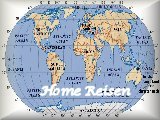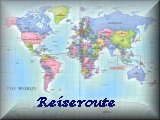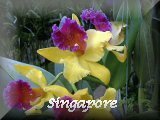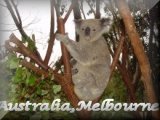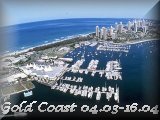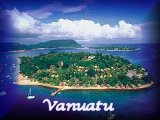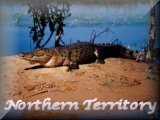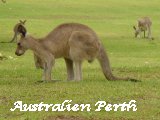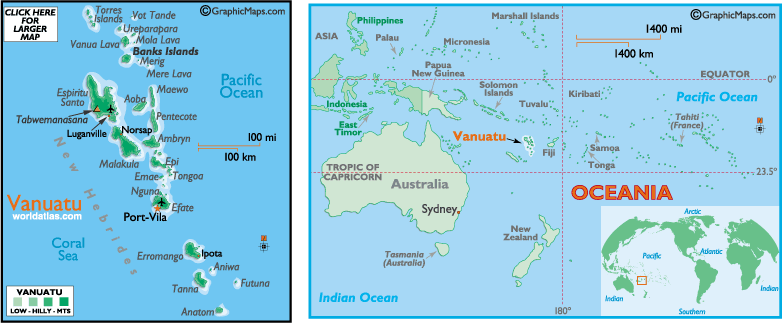Details

The islands we now call Vanuatu were home to Melanesians for over 2,500 years.
Then, in the 15th century, European explorers and missionaries began arriving
and the islands changed forever.

 Captain James Cook
sailed through the chain in 1774, chartering and naming many of the islands. He
collectively named them the New Hebrides, after the islands off the west
coast of Scotland. Captain James Cook
sailed through the chain in 1774, chartering and naming many of the islands. He
collectively named them the New Hebrides, after the islands off the west
coast of Scotland.

 Known as the New
Hebrides, they were administered jointly by Britain and France for 73 years.
National pride finally took hold, forcing independence in 1980, along with its
new name (Vanuatu) and a new constitution. Known as the New
Hebrides, they were administered jointly by Britain and France for 73 years.
National pride finally took hold, forcing independence in 1980, along with its
new name (Vanuatu) and a new constitution.

 Located directly west
of Fiji, Vanuatu is famed for gorgeous islands,
active
volcanoes and a very-intact Melanesian
culture, especially on Tanna. Located directly west
of Fiji, Vanuatu is famed for gorgeous islands,
active
volcanoes and a very-intact Melanesian
culture, especially on Tanna.

 Vanuatu includes 13
larger islands and about 70 smaller ones. Most are mountainous (volcanic in
origin) (some active), and covered in lush rain forests. Many are
protected by coral reefs. Vanuatu includes 13
larger islands and about 70 smaller ones. Most are mountainous (volcanic in
origin) (some active), and covered in lush rain forests. Many are
protected by coral reefs.

 The islands are subject
to devastating cyclones (hurricanes). The most destructive one ever (in
1987) damaged or ruined most of the local dwellings. The islands are subject
to devastating cyclones (hurricanes). The most destructive one ever (in
1987) damaged or ruined most of the local dwellings.

 The local economy still
revolves around agriculture and fishing, but tourism is a fast-growing industry
and liberal tax laws have made Vanuatu a popular offshore financial center. The local economy still
revolves around agriculture and fishing, but tourism is a fast-growing industry
and liberal tax laws have made Vanuatu a popular offshore financial center.

 While most of the outer
islands maintain their traditional Melanesian lifestyle, the impressive city of
Port-Vila is crammed with colonial buildings, expats, duty-free shops, casinos,
open-air markets, upscale restaurants and tourists. While most of the outer
islands maintain their traditional Melanesian lifestyle, the impressive city of
Port-Vila is crammed with colonial buildings, expats, duty-free shops, casinos,
open-air markets, upscale restaurants and tourists.

 For additional info
about Vanuatu, go
here. For additional info
about Vanuatu, go
here.

Facts and Figures

 Official
Name Republic of Vanuatu Official
Name Republic of Vanuatu

 Population
188,700 Population
188,700

 Capital
City Port-Vila (35,300) Capital
City Port-Vila (35,300)

 Flag
here Flag
here

 Languages
English, French, Pidgin, and numerous local dialects Languages
English, French, Pidgin, and numerous local dialects

 Official
Currency Vatu Official
Currency Vatu

 Currency
Converter
here Currency
Converter
here

 Religions
Presbyterian, Anglican, others Religions
Presbyterian, Anglican, others

 Land Area
12,190 sq km (4,707 sq miles) Land Area
12,190 sq km (4,707 sq miles)

 Latitude/Longitude
17º 74S, 168º 31E Latitude/Longitude
17º 74S, 168º 31E

 Highest
Point Mount Tabwemanasana stands at 6,165 ft. (1,879 m) Highest
Point Mount Tabwemanasana stands at 6,165 ft. (1,879 m)

 Links:
Wetter Vanuatu
Links:
Wetter Vanuatu |
